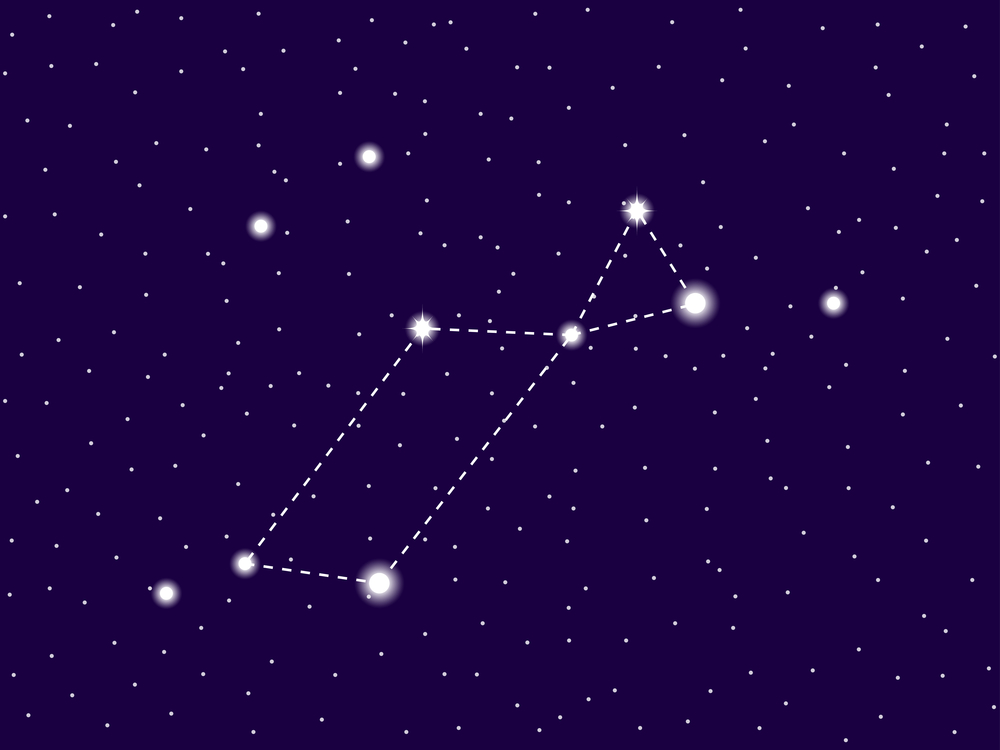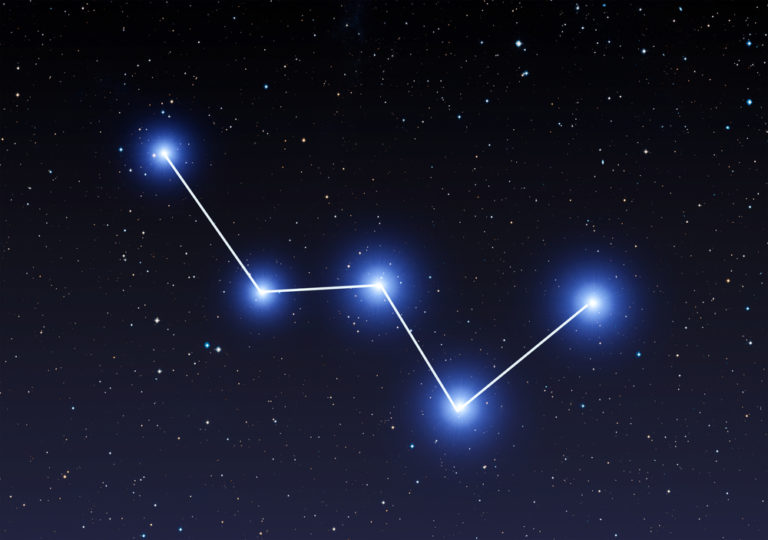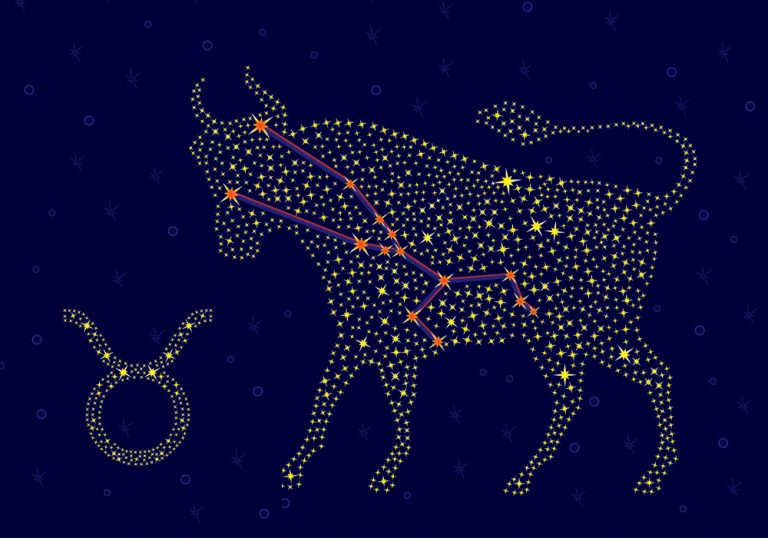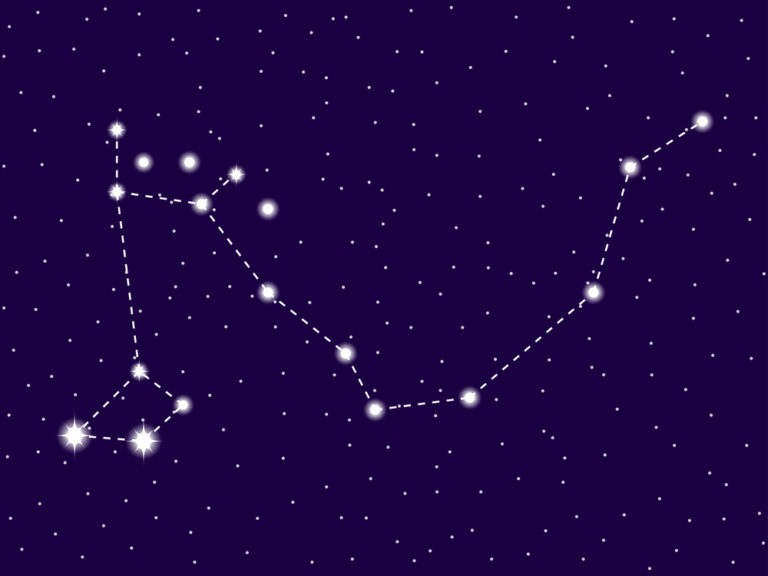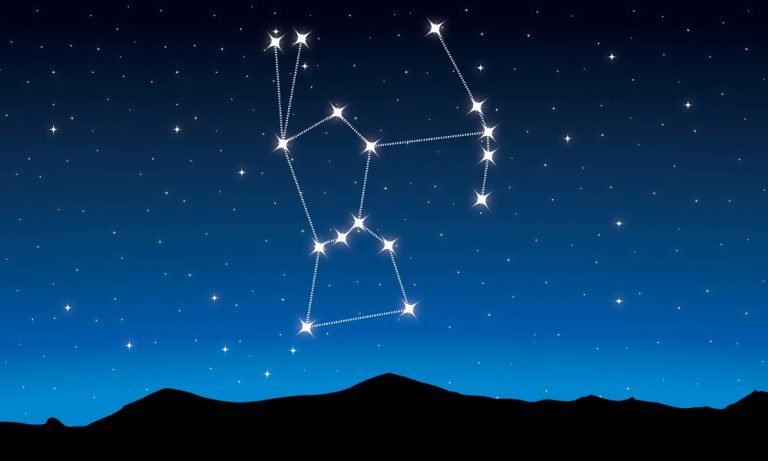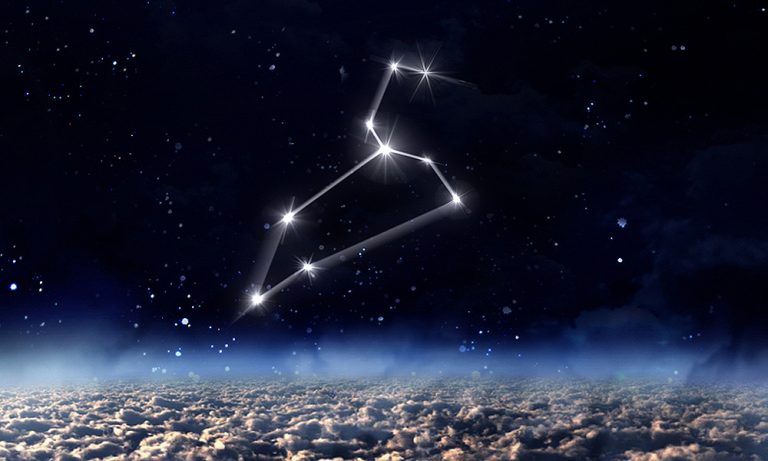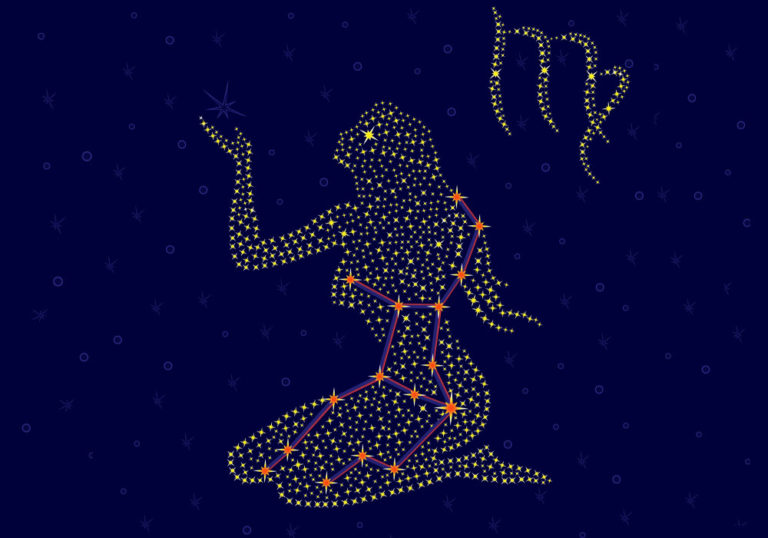Lyra Constellation: Stars, Myth, and Location (2024)
Object name: Lyra Constellation
Abbreviation: Lyr
Symbolism: The Lyre
R.A. position: 18h 14m to 19h 28m
Dec. position: 25.66° to 47.71°
Distance from earth: The average distance is 652 light-years
Area: 286 sq. deg.
Brightest star: Vega (Alpha Lyrae)
Visible at: Latitudes between +90° and −40°
Best viewed: During the month of August at 9.00pm
The constellation Lyra is the 52nd largest in the sky. It is also known as the Lyre or the Harp. It is an ancient constellation that dates back to Greek times and is associated with a gentle mortal, Orpheus, who loved poetry and music.
He suffered a terrible loss when his beautiful wife Eurydice was condemned to live in the underworld forever.
Lyra can be found in the sky by locating the famous Summer Triangle or the Northern Cross. Lyra is an exciting constellation to explore, offering the spectacular Messier 56 and the amazing Ring Nebula.
Read on to learn more about Lyra constellation facts and the Lyra name meaning.
- Characteristics
- Features
- Location and visibility
- History of observation
- Mythology and meaning
- Future
Characteristics
Lyra constellation
Lyra is a small constellation located in the northern celestial hemisphere. It has many bright stars including the well-known star Vega. It also contains 2 stars with fascinating names, Sulaphat and Sheliak.
Lyra comes from the Greek myth of a gentle mortal Orpheus, who played the lyre to charm mortals, gods, animals, and even streams and rocks. Orpheus had a blissful marriage which turned into tragedy.
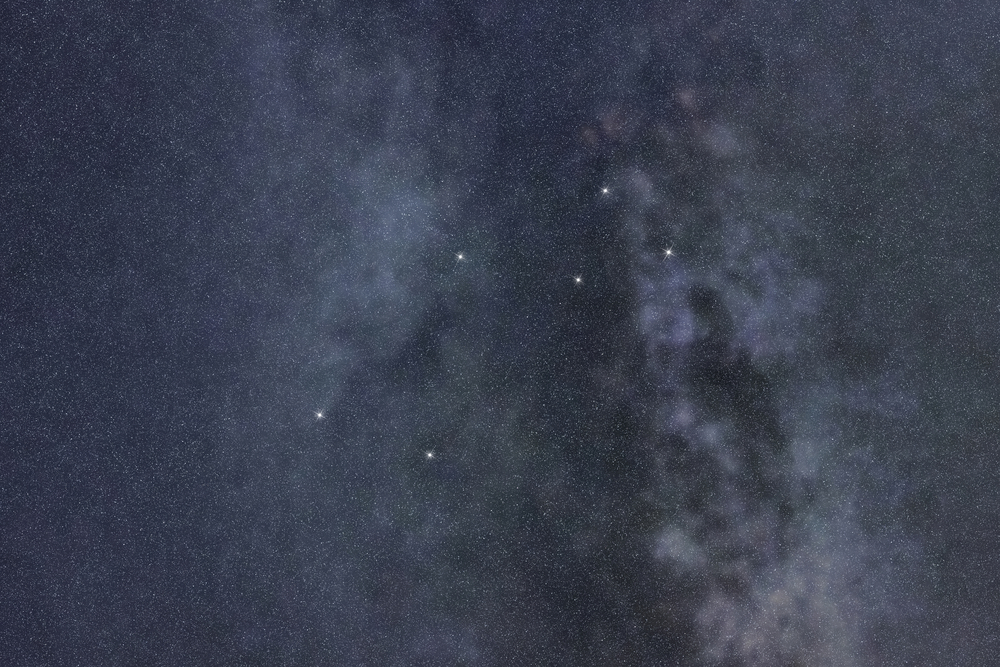
After killing himself, the God Zeus placed his treasured lyre amongst the stars. A sad story, that tells of the opposites of joy and sadness, life and death, hope and loss.
The orpheus constellation occupies an area of 286 square degrees. The neighboring constellations are Cygnus the Swan, Hercules the Great Warrior, and Vulpecula the Fox.
For home astronomers, Lyra offers fabulous deep-sky objects to view. It has the amazing Ring Nebula and Messier 56, an open star cluster. It also features NGC 6745, two galaxies that collided millions of years ago (1).
There is no Lyra zodiac sign, as Lyra is not part of the 12 zodiac symbols. The Lyra symbol is a beautifully handcrafted harp. The Lyra origin and the Lyra constellation story dates back over 3000 years (2).
What does Lyra constellation look like?
Lyra is a beautiful harp or lyre. This is an ancient musical instrument played by the Gods in Greek mythology. It also features many other ancient religions and folklore, like a harp or cithara. Lyra is the instrument that belonged to the gentle Orpheus, who received it as a gift from his father.
In the sky, the constellation Lyra is a full instrument, nestling amongst the stars near to the beautiful Swan Cygnus. By pinpointing the major stars in Lyra you can imagine the music flowing into the heavens.
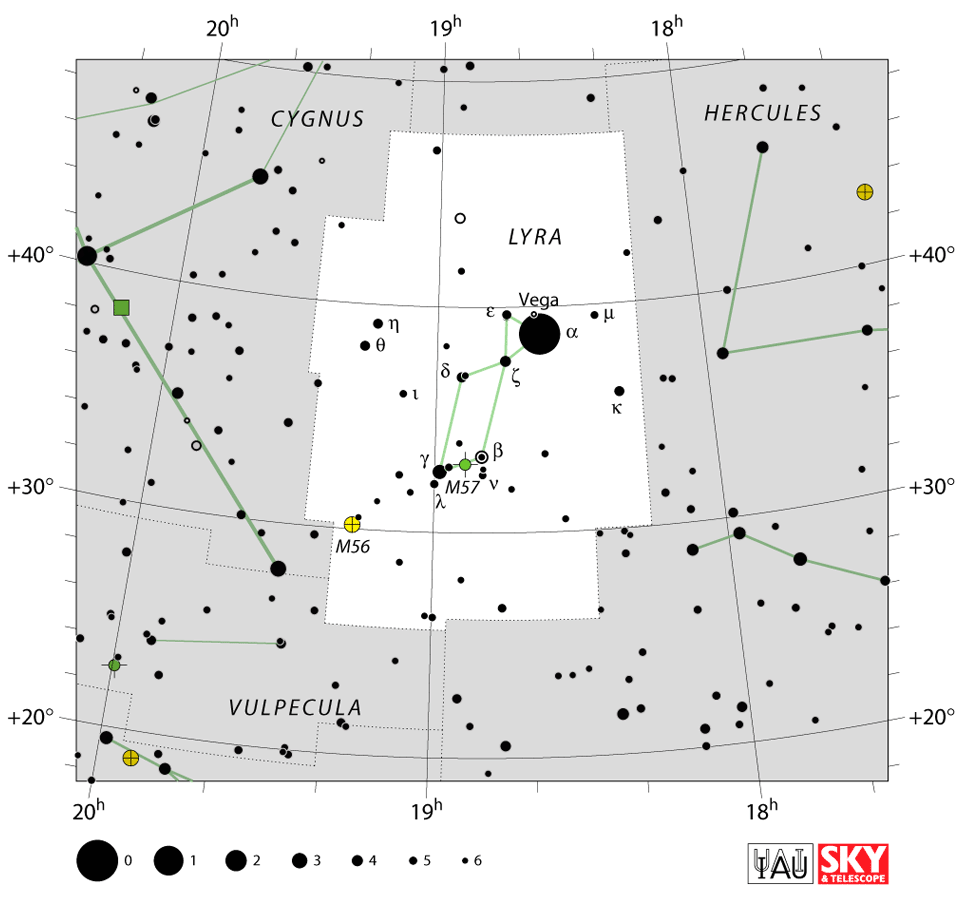
Imagine a U-Shaped instrument, fashioned from a beautiful rare tortoiseshell. The star Vega lies at the bottom of the U-shape, where Orpheus held the instrument. The strings are formed by stars that create long parallel lines. The stars Sulaphat and Sheliak depict the strings that are plucked.
To complete the image, varnish the harp in smooth and silky oil and decorate it with a brushing of gold leaf. It is an inspirational image in the sky, symbolizing the love of culture, arts, poetry, and music.
How far is Lyra constellation from earth?
When viewing a constellation from Earth, it appears as if all the stars and celestial bodies are on one flat plane. In reality, this is not correct! They all lie at different distances away, measured in light-years.
Some stars may be as close as 40 light-years. Deep-sky objects may be as far as 60 million light-years away.
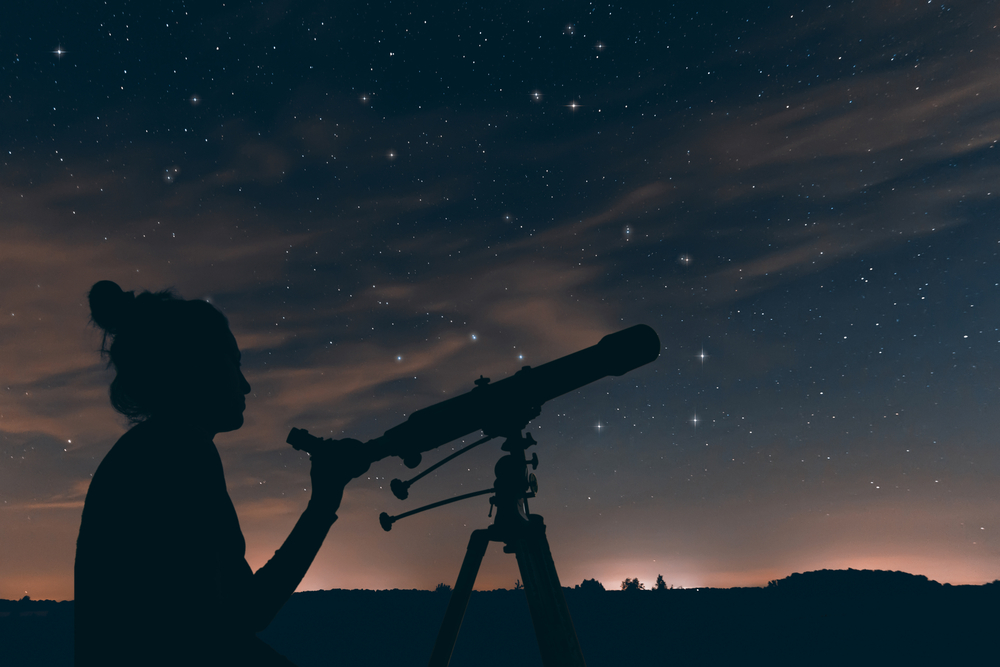
To give some idea, the famous star Vega is 25 light-years away from Earth. Sulaphat lies about 620 light-years away. Sheliak, also known as Beta Lyrae is 960 light-years away from our Solar System.
Further away is the star Delta Lyrae, at about 1100 light-years. R Lyrae, the red giant lies about 350 light-years away and RR Lyrae is 860 light-years away from the Sun.
Much further away is the beautiful Messier 56, a globular cluster. It lies about 32,900 light distant. Also in the Lyra constellation is NGC 6791, an open cluster. It is 13,30 light-years away.
Taking into account the brightest stars and their individual distances, the average distance to the Lyra constellation from Earth is about 652 light-years. If you consider the deep-sky galaxies, the distance is around millions of light-years!
Features
Major stars in Lyra
Here is a list of major Lyra constellation stars.
Vega – α Lyrae (Alpha Lyrae)
Vega has an apparent visual magnitude of 0.03, making it Lyra’s brightest star. It is also the 5th brightest star in the night sky. In the northern sky, it is the 2nd brightest star, with only Arcturus in Boötes being brighter.
Vega is a white dwarf and lies 25.04 light-years away from Earth. Alpha Lyrae was the northern pole star around the year 12,000 BC and will be once again around the year 13,727AD.
Vega is 2.1 times bigger than the Sun and only about a tenth its age, at about 455 million years old. The name Vega comes from the Arabic wāqi‘, which means “falling” or “landing”, taken from the phrase an-nasr al-wāqi‘, “the falling eagle” (3).
Vega Lyra is easy to find in the sky. It is one of the stars in the well-known asterism, the Summer Triangle. Together with Altair in the constellation Aquila and Deneb in Cygnus, the three stars indicate the vertexes of the triangle.
Sulafat – γ Lyrae (Gamma Lyrae)
Sulaphat is the 2nd brightest star in Lyra. The name Sulafat comes from the Arabic al-sulḥafāt, meaning “the turtle”. The star has an apparent visual magnitude of 3.26 and lies about 620 light-years away from the Sun.
The star is a blue-white giant with a radius about 15 times that of the Sun. It is hotter than the sun with a surface temperature of around 10,000 K. In comparison, the Sun’s temperature is around 5,800 K (4).
Sheliak –β Lyrae (Beta Lyrae)
Sheliak, also known as Beta Lyrae, is a double star system with an apparent visual magnitude of 3.52. This is a bright Lyra star that you can see without a telescope. It lies about 960 light-years away from Earth. The name Sheliak comes from šiliyāq, the Arabic name for the Lyra constellation.
The Beta Lyrae system has a variable magnitude between 3.4 to 4.3. This is because the two stars orbit and periodically eclipse one another. The orbit period of these Lyra stars is 12.94 days. The primary star is a blue-white bright giant.
R Lyrae
R Lyrae is a red giant star in Lyra that lies about 350 light-years away from Earth. It is a semiregular pulsating star with an apparent visual magnitude that varies between 3.9 and 5.0 over a period of 46 days.
You can see it without a telescope, however, you will notice the Purkinje Effect. This happens when red light builds up on the retina. As you look at a red star, it appears to get brighter and brighter (5).
δ Lyrae (Delta Lyrae)
Delta Lyrae is made up of a blue-white dwarf and a binary star system. They orbit one another every 88 days. The components have apparent visual magnitudes of 5.5 and 9.8 respectively.
Because the separation between the two stars is very small, they form a spectroscopic binary, which can only be resolved with a powerful telescope. The system lies about 1,100 light-years away from the Sun. Delta-2 Lyrae is a red bright giant and is approximately 75 million years old.
The Double Double – ε Lyrae (Epsilon Lyrae)
Epsilon Lyrae, known as the Double Double, is a multiple lyrian star system about 162 light-years away. It has an apparent magnitude of 4.7. Using a telescope, the system appears as two stars, each of which can be resolved into a binary.
The two main components orbit each other. Epsilon-1 Lyrae is the northern component and its two stars have an orbital period of about 1,800 years. Epsilon-2 Lyrae is the southern component and its two stars have an orbital period of around 700 years (6).
RR Lyrae
RR Lyrae is a well-known variable Lyra star system that lies near to Cygnus. The star serves as a prototype of an entire class of stars, known as the RR Lyrae variables.
These are periodic variable stars that are used to measure galactic distances. RR Lyrae has an apparent visual magnitude ranging from 7.06 to 8.12. It lies about 860 light-years away from the Sun. RR Lyrae variables were similar to the Sun and then shed their mass.
The phenomena of RR Lyrae’s variability was first discovered in 1901 by the Scottish astronomer Williamina Fleming, one of the few woman astronomers (7).
Deep-sky objects in Lyra
Messier 56 (M56, NGC 6779)
Messier 56 is a globular cluster in the harp constellation. It has an apparent visual magnitude of 8.3 and is approximately 32,900 light-years away from our Solar System. The cluster is large with a distance of around 84 light-years across. Its discovery was in 1779, by Charles Messier.
With a home telescope, Messier 56 appears as a fuzzy star. Using an 8-inch telescope, you will get great views of this cluster. To find M56, look midway between the stars Albireo in Cygnus, and Sulafat in Lyra. M56 is about 13.70 billion years old (8).
The Ring Nebula – Messier 57 (M57, NGC 6720)
The Ring Nebula, also known as Messier 57, is a famous planetary nebula in Lyra the harp constellation. Planetary nebulae form when a dying red giant star expels its shell of ionized gas, forming the nebula. The star itself becomes a white dwarf, roughly the size of the Earth.
About 6,000 years ago, the central star of the Ring Nebula ejected its outer layers. The cloud covers a radius of about 1.3 light-years. The Ring Nebula has an apparent visual magnitude of 8.8 and lies about 2,300 light-years away from our Solar System (9).
NGC 6791
NGC 6791 is an open cluster in the constellation Lyra. It has an apparent visual magnitude of 9.5 and lies about 13,30 light-years distant from the solar system. It is around 8 billion years old. Astronomers say that it has iron to hydrogen abundance ratio that is more than twice that of our sun.
As such, it is one of the oldest and most metal-rich clusters in the Milky Way galaxy. Its mass is about 5,000 solar masses, making it one of the most massive open clusters known. The cluster was discovered by the German astronomer Friedrich August Theodor Winnecke in 1853 (10).
NGC 6745
NGC 6745 is an irregular galaxy in Lyra the constellation. It has an apparent visual magnitude of 13.3 and lies about 206 million light-years distant from the Sun. It is around 10 billion years old. NGC 6745 is an exciting deep-sky object as it gives astronomers insight into colliding galaxies.
The image shows a large spiral galaxy with its nucleus still intact, peering at the smaller passing galaxy, at the lower right. The bright blue streak and whitish-blue top show the path taken during the smaller galaxy’s journey. These galaxies actually collided as they passed one another (11).
IC 1296
IC 1296 is a barred spiral Lyra galaxy with an apparent visual magnitude of 14.8, which is very faint. It lies about 221 million light-years away from Earth. The galaxy lies near to the famous Ring Nebula. In the photo, IC 1296 is in the center with the Ring Nebula in the upper right corner.
Exoplanets in Lyra
Exoplanets are planets that revolve around stars, other than our star, the Sun. Exoplanets excite astronomers as they may offer conditions similar to those in our Solar System, with the possibility of life.
The Lyra star constellation has dozens of exoplanets, including the fascinating star Xihe and its planet Wangshu.
HD 173416
HD 173416 is also known as Xihe. It is a yellow star that lies about 454 light-years away from Earth. It has one exoplanet known as Wangshu. During the NameExoWorlds campaign, organized by the International Astronomical Union (IAU), members of the public could name stars and exoplanets.
These names came from the student astronomy club of Guangzhou No. 6 Middle School in Beijing China. Xihe and Wangshu are the names of the moon and sun goddesses in Chinese ancient mythology. Wangshu is a music star planet with a mass of 2.7 times that of Jupiter. It takes 323.6 days to complete one orbit of its star (12).
GJ 758
GJ 758 is a yellow main-sequence star that lies about 51.4 light-years away from our Solar System. It has one Lyra planet, GJ 758 b. The exoplanet orbits its mother star once every 298 years (13).
Kepler-200
Kepler-200 is a star with a radius of 0.94 that of our Sun’s. It has 2 exoplanets that orbit it. Kepler-200 b is a Neptune-like exoplanet with a mass of 5.18 Earths. It takes 8.6 days to complete one orbit of its star. Discovery was in 2014 (14).
WASP-39
WASP-39 is also known as Malmok. It is a white-yellow star that lies about 750 light-years away from our Solar System. Malmok has one exoplanet known as Bocaprins. The star and planet got their names during the NameExoWorlds campaign at the 100th anniversary of the IAU. Malmok and Boca Prins are scenic beaches in Aruba.
Planet Lyra WASP-39 b has a mass of 0.28 times that of Jupiter and a radius 1.27 times that of Jupiter. It orbits its star every 4 days. Scientists used NASA’s Hubble and Spitzer space telescopes to find the “fingerprints” of water in the atmosphere of the exoplanet. They found that it has three times as much water as Saturn (15).
Meteor showers in Lyra
Meteor showers occur when Earth crosses the orbital path of a comet. Dust and debris from the remnants of the comet enter the Earth’s atmosphere and burn up. This creates a spectacular show, often known as shooting stars.
The Lyrids
The April Lyrids are a meteor shower that you can see from 16 April to 26 April. The peak is around 22 April. It is a medium-strength shower with around 18 meteors per hour. They travel at speeds of 48.4km/s. The radiant of the shower is near Lyras brightest star, Vega.
The comet of origin is C/1861 G1 (Thatcher), discovered by A. E. Thatcher on Apr. 5, 1861. It takes 415.5 years for comet C/1861 G1 Thatcher to orbit the sun once and its closest approach was in 1861.
The letter “C” indicates that comet Thatcher is a long-period comet and is not expected to return to the inner solar system within a period of 200 years.
These meteors are best seen from the northern hemisphere where the radiant is high in the sky at dawn. You can see the shower in the southern hemisphere, but the rate of meteors will be lower.
The Eta Lyrids
This shower occurs from 3 May to 14 May with a peak on 9 May. It is a small shower offering 3 meters per hour, traveling at speeds of 43km/s. The originating comet is C/1983 H1 (IRAS-Araki-Alcock) (16).
Location and visibility
Where is Lyra constellation located?
Lyra is a small constellation and you may think that it is difficult to locate in the sky. It is not! The main bright star, Vega, forms part of the well-defined asterism, or star pattern, called the Summer Triangle. Once you find these three stars, you can imagine the musical Lyra harp in the sky.
Lyra is a northern constellation and is the 52nd largest constellation of the 88 named constellations. It occupies an area of 286 square degrees. Lyra lies in the fourth quadrant of the northern hemisphere, NQ4.
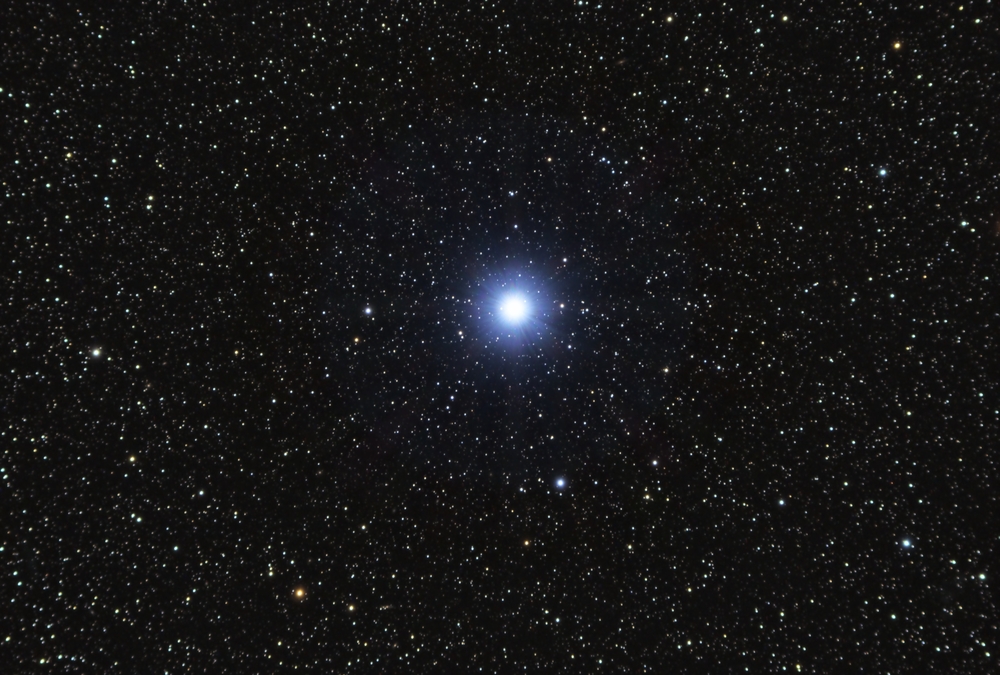
A quadrant is essentially a quarter of a circle, which allows astronomers to measure the altitude of objects above the horizon. You can see the music constellation at latitudes between +90° and −40°.
To find the Lyra constellation location, you can find Hercules, the Great Warrior. Lyra lies near to his left hand that holds the head of the dreaded Medusa. Also near Lyra is Cygnus, the Swan.
Cygnus is easily located because it is home to the famous Northern Cross, The Northern Cross is indicated by the star Deneb at the top and the star Albireo at the bottom. Lyra lies between Cygnus and Hercules (17).
When is Lyra constellation visible?
Lyra, the Orpheus constellation, is visible in both the northern and southern hemispheres. But, the best views are in the northern regions.
In the northern hemisphere – In April and May, Lyra appears low on the horizon in the northeast at about 11pm. It gradually moves higher in the sky before day breaks. From June to July the constellation appears in the east around 10 pm gradually moving higher until it is directly overhead.
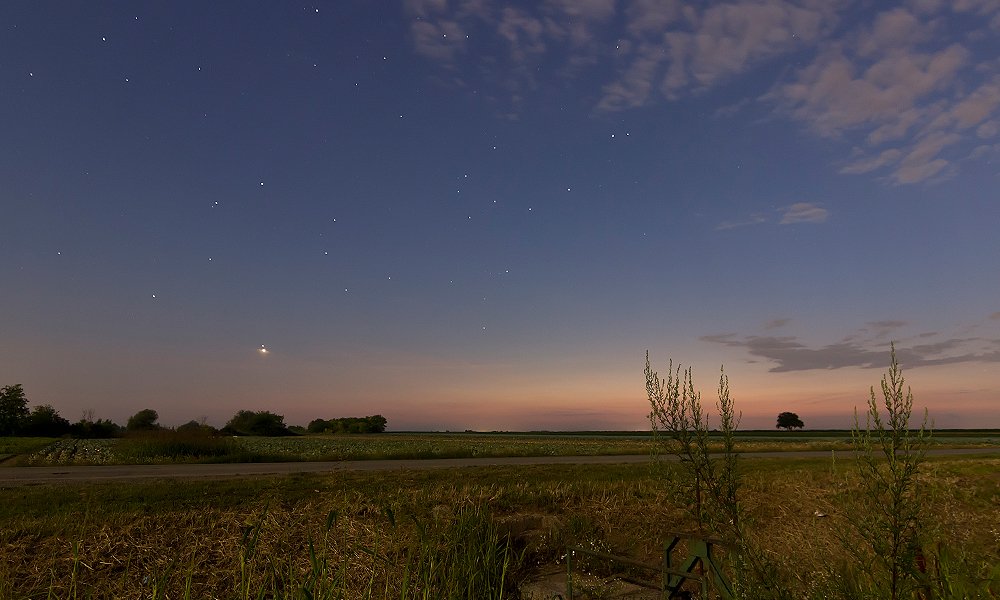
From August to September Lyra appears overhead at around 10pm. In October, November, and December it is visible high in the western sky between 6pm and 7pm. This is a great time to take the family out for some stargazing and teach the kids about Lyra astronomy.
In the southern hemisphere – In July and August, you can see Lyra very low on the northern horizon between 8pm to 11pm. The constellation remains low on the horizon moving westward for around 5 hours before dipping below the horizon.
Remember – in the southern hemisphere, all constellations appear upside down.
How to find Lyra constellation?
Northern Hemisphere
Here’s a step-by-step guide on how to find Lyra constellation in the sky.
- To find Lyra, it is easiest to first find the Northern Cross
- This is a well-defined star pattern that looks exactly like a Cross
- The Cross is also easy to find as it lies inside the pattern formed by the three bright stars, called the Summer Triangle
- Star hop along a line, drawn diagonally downwards to the right, and you find the bright star Vega
- Vega marks the top of the lyre or harp
- If you prefer, you can locate Hercules, the Great Warrior
- The Lyra constellation lies near to his left hand that holds the head of the Gorgon, Medusa
Southern Hemisphere
- It is more tricky to find Lyra in the southern hemisphere as it is always very low on the horizon
- First, locate the Northern Cross
- This is a well-defined star pattern that looks exactly like a Cross
- The Cross is also easy to find as it lies inside the pattern formed by the three bright stars, called the Summer Triangle
- Star hop along a line, drawn diagonally upwards to the left, and you find the bright star Vega
- Vega marks the top of the lyre, or harp, which is lying upside down
- If you prefer, you can locate Hercules, the Great Warrior
- The Lyra constellation lies near to his left hand that holds the head of the Gorgon, Medusa
How to view Lyra Constellation?
Lyra is a small constellation, 52nd in size out of the 88 constellations. It is easy to find with its well-defined star pattern or asterism, known as the Summer Triangle. By locating these 3 stars, you can imagine the harp constellation in the sky.
Like all stargazing experiences, getting away from city lights is the best way to see constellations and deep-sky objects. You can see the music constellation with the naked eye, but using a telescope will make it so much more exciting. For amateurs, there is a great choice of well-priced scopes that will give you fabulous images of Lyra.
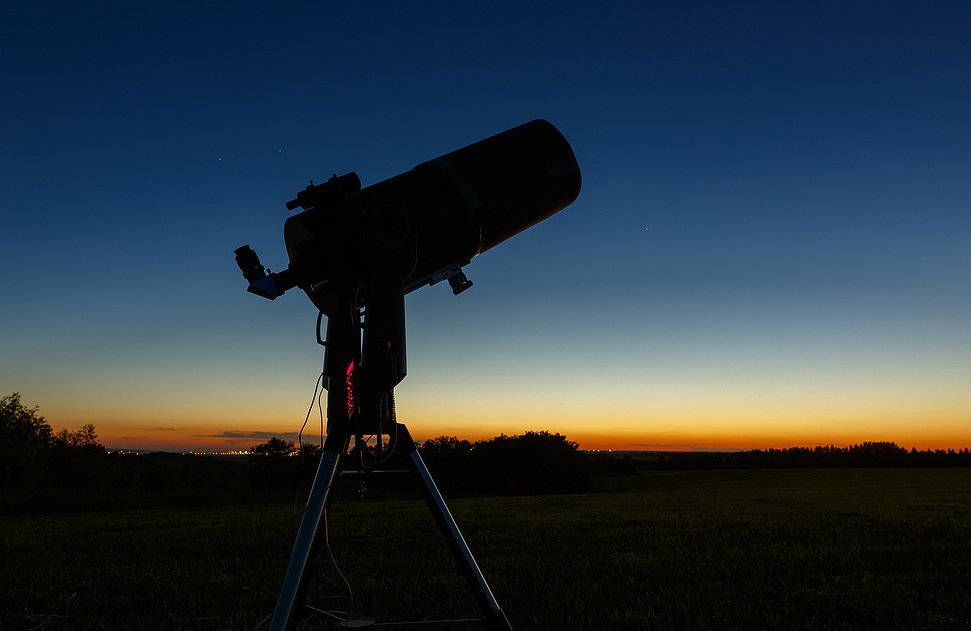
Depending on your budget, plan to spend from $250 to $900 on a telescope that will give a lifetime of viewing.
The Celestron AstroFi 102 Telescope is an exciting computerized telescope, ideal for a family who has progressed from manual models. It has integrated WiFi and includes a Celestron SkyPortal app for iPhone, iPad, and Android devices.
The scope has a classic Maksutov Cassegrain design with a 102mm aperture and fully coated high-quality glass optics.
It comes with 2 Kellner eyepieces, a 25mm and a 10mm, a FinderScope, a star diagonal, and an integrated smartphone adapter. The tripod has an adjustable height, which is great for smaller children.
The accessory tray is convenient, allowing you to keep all your bits and pieces close at hand. The Celestron AstroFi 102 Telescope gives amazing views of the vega constellation. At around $400, it is a great investment for a family hobby.
History of observation
Who discovered Lyra constellation?
Lyra history dates back to ancient civilizations of the Greeks, Chinese and Hindus, and was documented in stories, folklore, and myths.
The Lyra star constellation dates as far back as 3000BC. It associates with the gentle Orpheus who was given a lyre as a gift from his father Apollo.
Orpheus charmed mortals, gods, animals, trees, and streams with his beautiful music and poetry. Painted images of Orpheus and his lyre feature on many ancient Greek jars dating back to 400BCE.
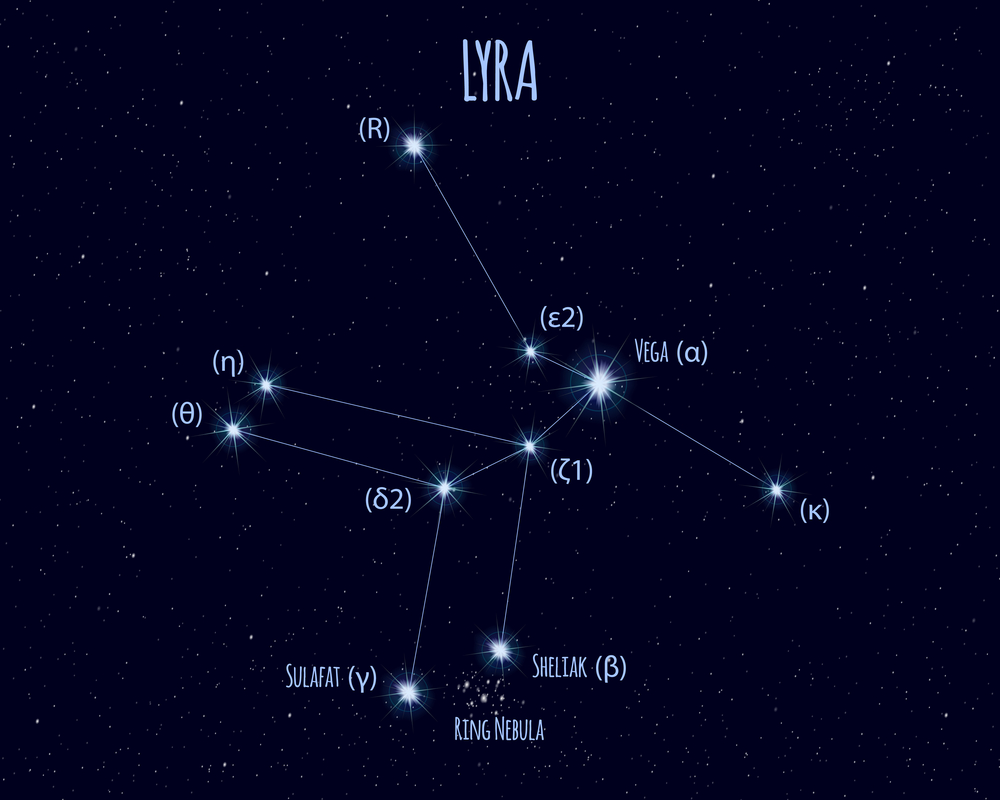
The Lyra stars also feature in Chinese astronomy dating back to 750BC. The stars Vega, Epsilon, and Zeta Lyrae are known as Zhinü, the weaving girl. She was the granddaughter of the celestial emperor who fell in love with a lowly cowherd, represented by the star Altair.
The celestial emperor separated them, placing them on opposite sides of the Milky Way (18). In traditional Chinese uranography, the modern constellation Lyra is tiān qín zuò, meaning “the celestial zither constellation”. It lies within the northern quadrant of the sky, symbolized as the Black Tortoise of the North.
In ancient Indian Astronomy, the constellation of Lyra represents a vulture.
In the Bible, the book of Genesis, written around 900BC by Moses has a story that relates to the myth of Orpheus and Eurydice. The analogy of “not looking back” is the key in both stories.
When God decided to destroy Sodom and Gomorrah, he ordered Lot, a good man, to take his family and leave. God instructed them to head for the mountains without looking back at the city being destroyed. Lot’s wife could not resist turning around to see the burning cities. She was immediately transformed into a pillar of salt (19).
In more recent times, the famous astronomer Ptolemy officially named the music constellation. He lived between 90 AD and 168 AD.
How old is Lyra constellation?
Lyra is an ancient constellation that dates back to the era of Greek mythology around 3000BC. The constellation depicts the myth of Orpheus, a gentle soul, who loved poetry and music.
He was given a lyre by his father and used it to charm mortals, gods, animals, plants, and rivers. Orpheus took his own life after he was unable to take his wife Eurydice from the Underworld (20).
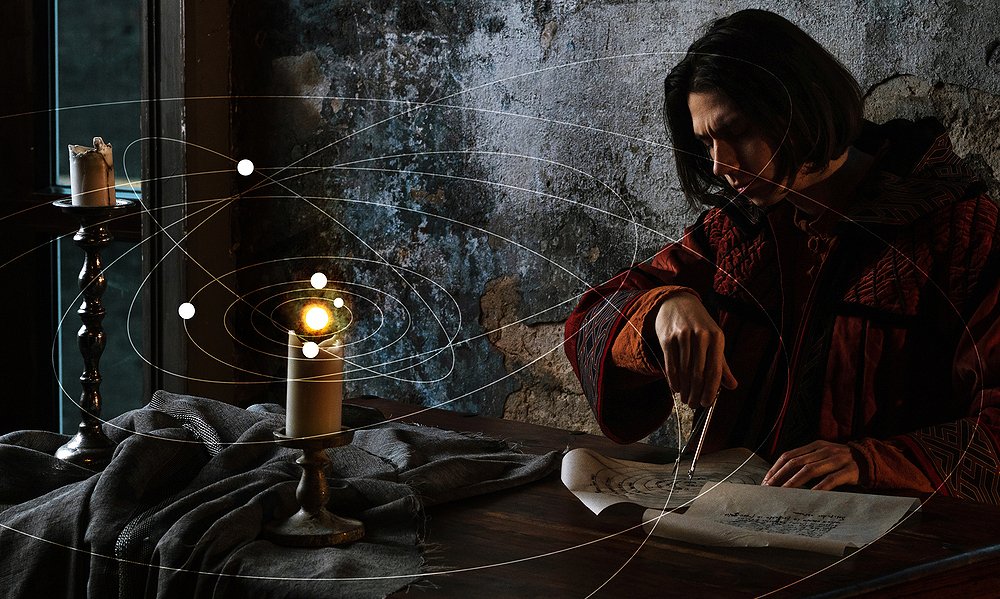
Lyra is also an old Chinese constellation known as far back as 750BC. It lies within the northern quadrant of the sky, symbolized as the Black Tortoise of the North and represents a musical instrument called a zither.
The Egyptians around the 5th and 6th century, cast coins and created tapestries depicting the story of Orpheus. The Hebrew Kabalists around the 13th-century associate Lyra with the Hebrew letter Daleth and the 4th Tarot Trump, The Emperor (21).
In biblical times, around 900BC, in the Book Genesis 19. Moses wrote the story of Lot and his wife who were told by God to flee the burning cities of Sodom and Gomorrah.
He ordered Lot to head for the mountains without looking back at the cities being destroyed. Lot’s wife could not resist turning around. She was immediately transformed into a pillar of salt. This story has many similarities with the myth of Lyra (22).
How did the Lyra constellation get its name?
Most constellations get their names from ancient cultures, folklore, or mythology. So, what is the Lyra name origin?
The Lyra name comes from lyre, a musical instrument that resembles a harp. In the Lyra constellation myth, Hermes crafted the lyre out of tortoiseshell and is said to be the first lyre ever made. He gave it to Apollo as a gift, who in turn passed it on to his musician son, Orpheus. Orpheus was a gentle soul who charmed mortals, Gods, and even trees, rivers, and animals with his beautiful music.
The word lyre, from the Greek word lura, is related to the word lyric, from Greek lurikos, meaning ‘pertaining to, or singing to, the lyre’. Erato is one of the nine Muses. She represents poetry and mime. There is a connection between the words, mime, mimic, lyric, and lyre. The Lyrebirds of Australia have tails shaped like a lyre. They have an amazing ability to mimic natural and artificial sounds around them.
Here are some more Lyra facts! The lyre, or harp, was made from tortoiseshell. It is sometimes confused with a cithara, which later gave rise to the modern-day guitar. The harp constellation is sometimes seen as a tortoise (23).
Mythology and meaning
Lyra myth
Lyra the constellation is associated with Lyra Greek mythology and the story of Orpheus, son of Apollo. Orpheus had extraordinary talent as a poet and musician and could even charm animals and nature with his playing.
His father gave him a beautiful lyre crafted out of a tortoiseshell, as a gift. With this lyre he was even able to quiet the voices of the sirens, luring seafarers to their death on the rocks.
Orpheus married the beautiful nymph Eurydice. Their marriage was blissful until the fateful day when Eurydice was bitten by a poisonous snake and died. In the Lyra myth, Orpheus was devastated by her death and descended into the underworld in an attempt to claim her back.
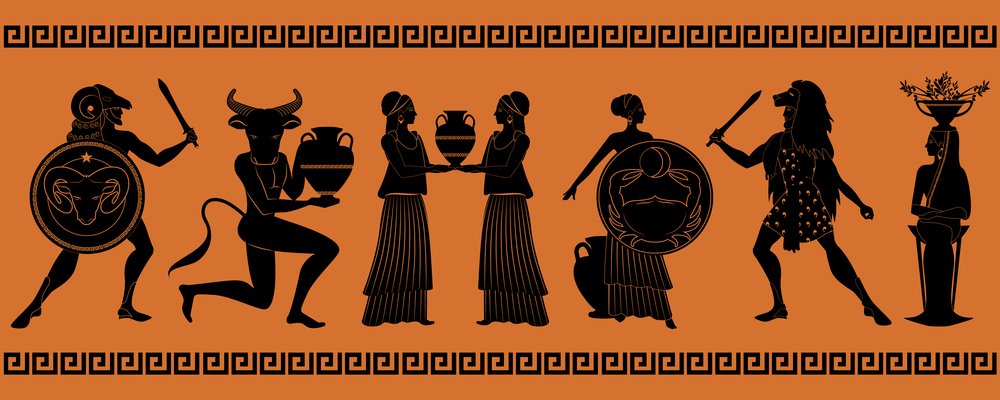
Once there, Orpheus charmed Pluto, God of the Underworld, and his wife Persephone. They granted his wish to reunite with his wife, with one condition. As they left the underworld, Orpheus was told not to look back at his wife. Unfortunately, Orpheus looked back at Eurydice who was following him out of the gloom.
She immediately descended back into the Underworld, where she remained forever. The heartbroken Orpheus took his own life so he could be reunited with his wife. According to Lyra mythology, the God Zeus then placed his lyre amongst the stars, and it became Lyra the harp constellation (24).
In ancient China, there is also a story about the Lyra constellation mythology. The stars Vega, Epsilon, and Zeta Lyrae are Zhinü, the weaving girl. She was the granddaughter of the celestial emperor. She made beautiful silks for the gods and goddesses.
After falling in love with a lowly cowherd, represented by the star Altair, she began to neglect her duties. The celestial emperor separated them, placing them on opposite sides of the Milky Way. In this sad Lyra constellation story, the couple could only meet on one night each summer (25).
What does Lyra symbolize?
The story of Orpheus and his lyre represents people with a sensitive nature who are faced with many challenges. Orpheus was a poet and a musician and could charm even trees, rivers, and animals with his beautiful music.
He loved all things beautiful and natural. Orpheus would never harm a living creature and even managed to still the voices of the dangerous sirens luring sailors to their death.
Orpheus found true love, Eurydice. He lost her when she was tragically bitten by a snake. The quiet Orpheus found inner strength, descending into the underworld to claim her back. He showed his undying love and great courage. After pleading his case, the Lyra Greek god of the Underworld granted his wish.
Unfortunately, Orpheus gave in to his emotions and did not obey the instruction. He looked back at Eurydice, who was following him and she immediately descended into the darkness.
Orpheus faced a double loss in his life. As a sensitive person, he could not live without his love and took his own life. Many people are condemned for doing this, but Orpheus showed the power of great love. Much like Romeo and Juliet, many centuries later, the Lyra meaning of love remains undefeated.
Lyra the lyre is a beautiful instrument, offering soothing and calming music for those in need. It has healing powers and brings out the good qualities in people. The Lyra symbol of the harp symbolizes an appreciation for music and the arts. The Lyra story shows the contrast between happiness and sadness, life and death, hope and failure, and good and evil (26).
Future of Lyra constellation
Lyra is a constellation that is fascinating for astronomers to study. It has colliding galaxies that show what the results of such a cosmic event can be. It also has star-forming regions, creating new stars as we speak.
The bright star Vega is on its way to becoming the brightest star in our sky. It will turn into an M-class Red Giant in about half a billion years. After that, it will become a white dwarf.
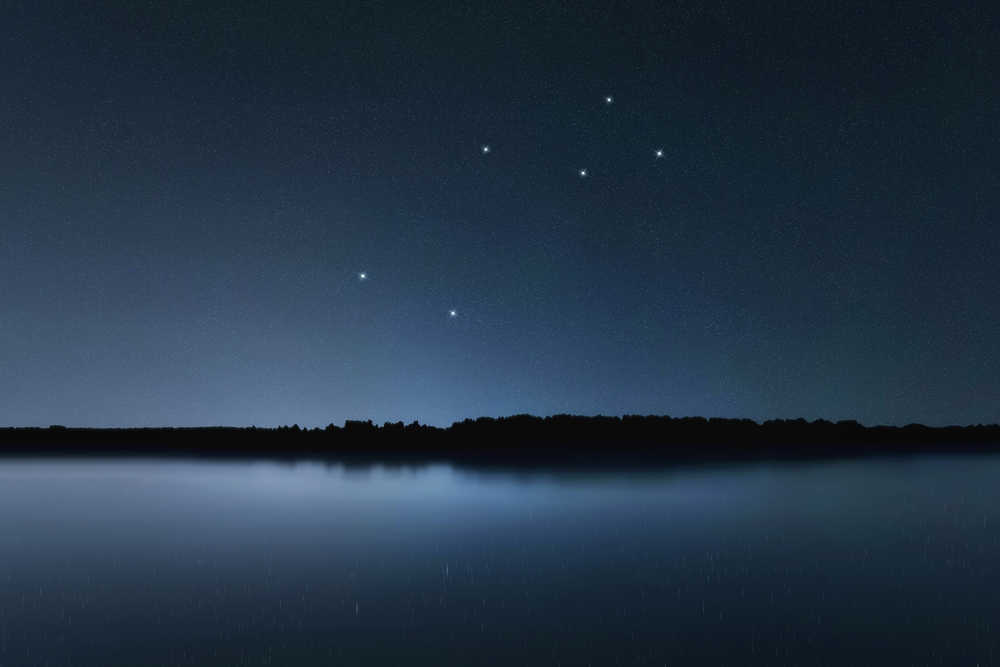
A white dwarf star has expelled most of its outer layers and only the hot core remains. Our solar system is moving towards Vega at a speed of 24km/s. In about 260,000 years Vega will be the brightest star in the sky.
In around 10,000 years, Vega will become the Northern Pole Star. The North Star is a star that holds its position in the sky, while the entire northern sky moves around it. That is because it is located very close to the north celestial pole. At the moment, Polaris, the star in the constellation of Ursa Minor the Little Bear, is the Northern Pole Star (27).
NGC 6745 is a system of galaxies that have been colliding with other galaxies for millions of years. It lies about 206 million light-years away. The larger galaxy was probably a spiral shape before the collision, now it is a peculiar-shaped galaxy. The dust and gas clouds around the galaxies extend for thousands of light-years and will continue to expand into space as the eons pass (28).
Another star with an interesting future is Sheliak, also known as Beta Lyrae. This is a double star, with the two components orbiting one another every 12.9 days. Beta A fluctuates in brightness from an apparent visual magnitude of 3.3 to 4.3, and back again. They lay so close to one another that the gravitational forces distort them, pulling the swirling clouds around the stars into ever-expanding shapes (29).

